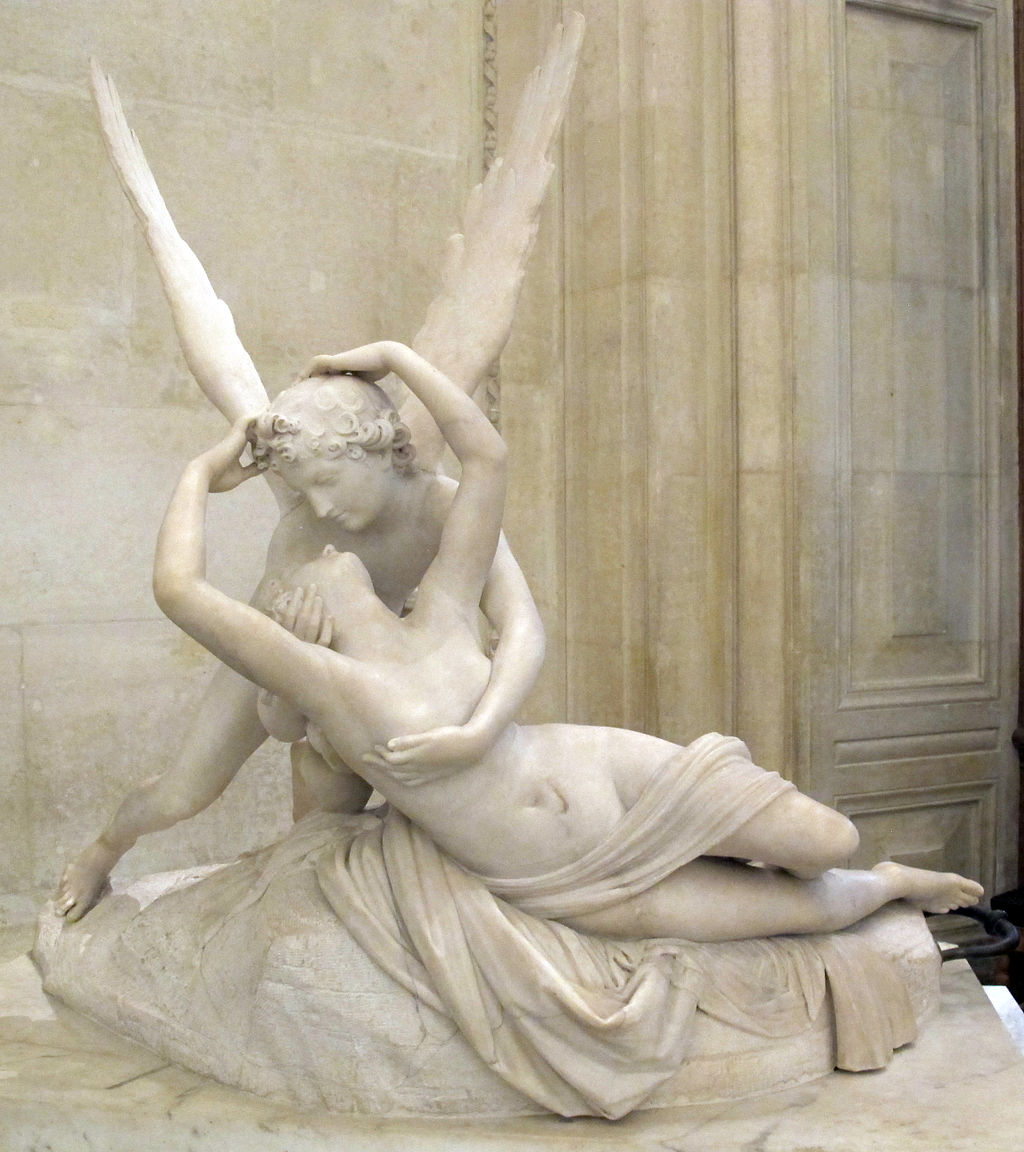
“Tristan and Isolde” by John Duncan depicts the Cornish knight Tristan and the Irish princess Isolde sharing a love potion, which causes them to fall madly in love. This composition blends aspects of the Celtic Revival and Symbolist art movements.
Tristan was commission by his uncle, King Mark of Cornwall, to travel to Ireland to bring back the fair Isolde for the King to marry. Although Isolde marries the King, she and Tristan are forced by the spell to seek each other as lovers.
The story details of Tristan and Isolde vary from author to author. Even the spelling of their name varies a great deal. The early tradition comprised the French romance poets from the second half of the 12th century. Later traditions are different in detail and come from an English 1300’s narrative.
In some versions, Tristan and Isolde take the potion accidentally. In other versions, the potion was created for the King, but Isolde gives it to Tristan instead.
The king’s advisors repeatedly endeavor to have the pair tried for adultery, but the couple continually uses trickery to preserve their façade of innocence.
As with the “Arthur, Lancelot, and Guinevere love triangle” in the medieval Arthurian tale, Tristan, King Mark, and Isolde all love and respect each other.
The story predated and influenced the Arthurian romance of Lancelot and Guinevere and substantially impacted Western art and literature.
The Tristan and Isolde story has been represented in many art media, from ivory mirror-cases to the 13th-century Sicilian Quilt.
Many of the manuscripts with literary versions are illuminated with miniatures. Later, the legend became a popular subject for Romanticist painters of the late 19th and early 20th centuries.
Tristan and Iseult
Tristan and Iseult (also spelled Isolde) is a chivalric romance from the 12th century. The story is a tragedy about the love between a knight Tristan and the princess Iseult.
Tristan honors the King as his mentor and adopted father. Iseult is grateful that King is kind to her, and the King loves Tristan as his son and Iseult as a wife.
Meanwhile, the Kingdom is endangered and in a fragile peace from the war between Ireland and Cornwall. However, when the King is confronted with proof of Tristan and Isolde’s romantic love, he is forced to punish them.
Tristan escapes on his way to the gallows and also rescues Iseult. The lovers escape but are later discovered by the King. They make peace with the King after Tristan agrees to return Iseult to her home in Ireland to exile himself from the King’s kingdom.
Symbolism
Symbolism was a late nineteenth-century art movement seeking to represent absolute truths symbolically through metaphorical images as a reaction against naturalism and realism.
The symbolist painters used mythological and dream imagery. The symbols used by symbolism are not the familiar emblems of mainstream iconography but intensely personal, private, obscure, and ambiguous references.
Celtic Revival
The Celtic Revival includes various movements in the 19th and 20th centuries that saw a renewed interest in Celtic culture. Artists drew on the traditions of “Celtic art” or “Insular art” of Ireland and Britain’s Early Medieval style.
Most Insular art originates from the Irish monastic movement of Celtic Christianity, or metalwork for the secular elite, beginning around 600 with the combining of Celtic and Anglo-Saxon styles.
One major distinctive feature is interlace decoration, in particular, the interlace decoration. A widespread result of the revival was the reintroduction of the High cross as the Celtic cross.
John Duncan
John Duncan (1866-1945) was a Scottish painter who, at the age of 15, was submitting cartoons to the local magazine. He briefly worked in London as a commercial illustrator, then traveled to study at the Düsseldorf Art Academy.
In 1892 Duncan moved to Edinburgh and joined the Celtic Revival movement. In 1900 Duncan was appointed as a Professor at the Chicago Institute. When he returned to Scotland, he settled in Edinburgh, where he lived for the rest of his life.
Tristan and Isolde
- Title: Tristan and Isolde
- Artist: John Duncan
- Year: 1912
- Medium: Tempera on canvas
- Dimensions: H 76.6 x W 76.6 cm
- Category: Mythological Art
- Museum: City Art Centre, Edinburgh, Scotland
John Duncan
- Artist: John Duncan
- Born: 1866, Dundee, Scotland
- Died: 1945, Edinburgh, Scotland
- Nationality: Scottish
- Movement: Symbolism, Celtic Revival
- Notable works:
- Saint Bride
- Tristan and Isolde
Tristan and Isolde Love Story
John Duncan Artworks
A Virtual Tour of the Scottish National Gallery
- “Vision after the Sermon” by Paul Gauguin
- Haystacks by Claude Monet
- “Saint Bride” by John Duncan
- “Drinkers in the Bower” by Pieter de Hooch
- “Portrait of Lady Agnew of Lochnaw” by John Singer Sargent
- “The Finding of Moses” by Giovanni Battista Tiepolo
- “Three Tahitians” by Paul Gauguin
- “Diana and Callisto” by Titian
- “Montagne Sainte-Victoire” by Paul Cézanne
Tales of Tristan & Isolde
Explore Scotland’s Museums
Edinburgh Museums
- National Museum of Scotland
- Scottish National Gallery
Glasgow Museums
- Kelvingrove Art Gallery and Museum
The Mystical Paintings of John Duncan
John Duncan
~~~
“May the hinges of our friendship never grow rusty.”
– Irish Proverb
~~~
Photo Credit: John Duncan, Public domain, via Wikimedia Commons
Popular this Week








 Sponsor your Favorite Page
Sponsor your Favorite Page SEARCH Search for: Search Follow UsJoin – The JOM Membership Program
Sponsor a Masterpiece with YOUR NAME CHOICE for $5
Share this:
- Tweet
